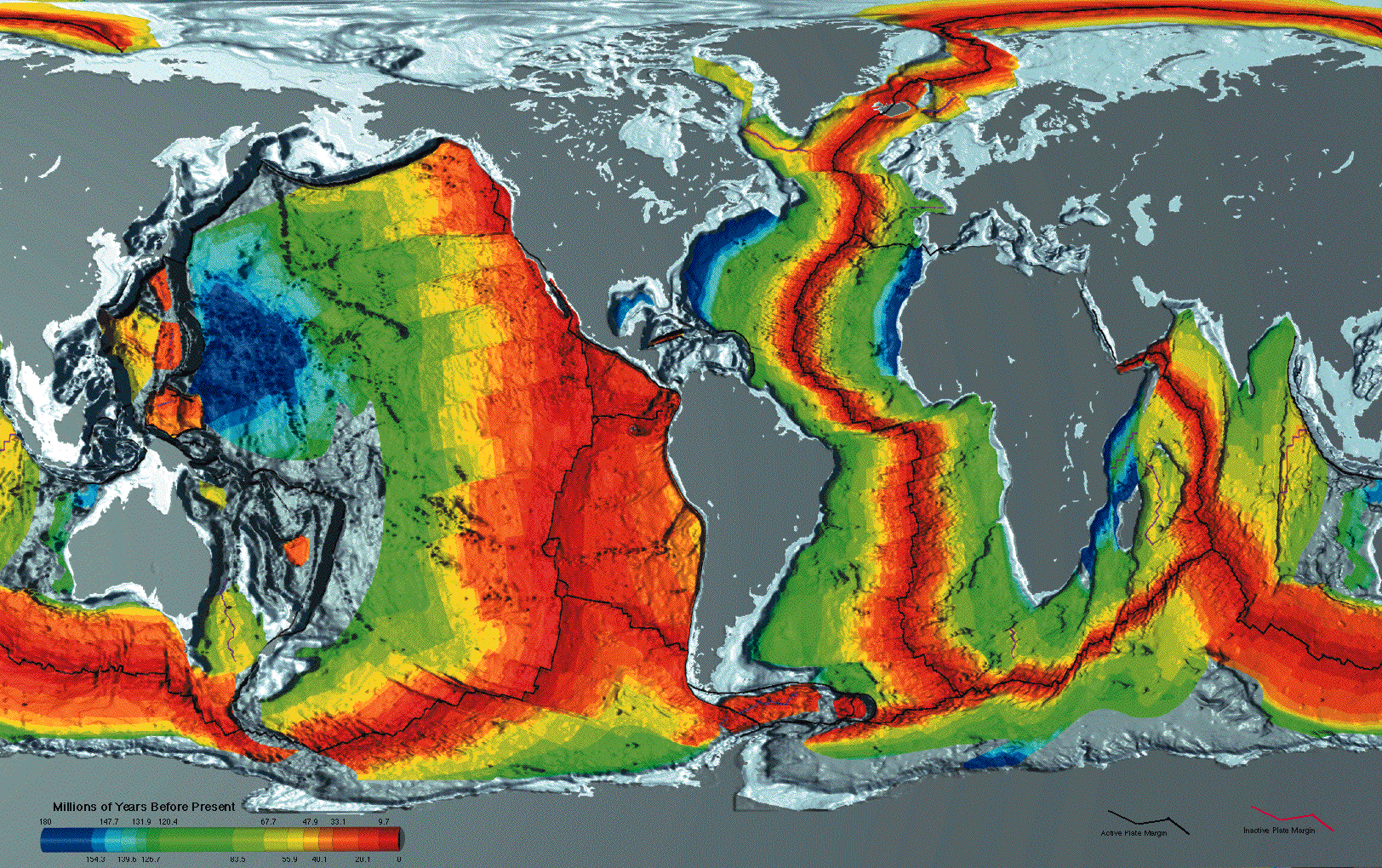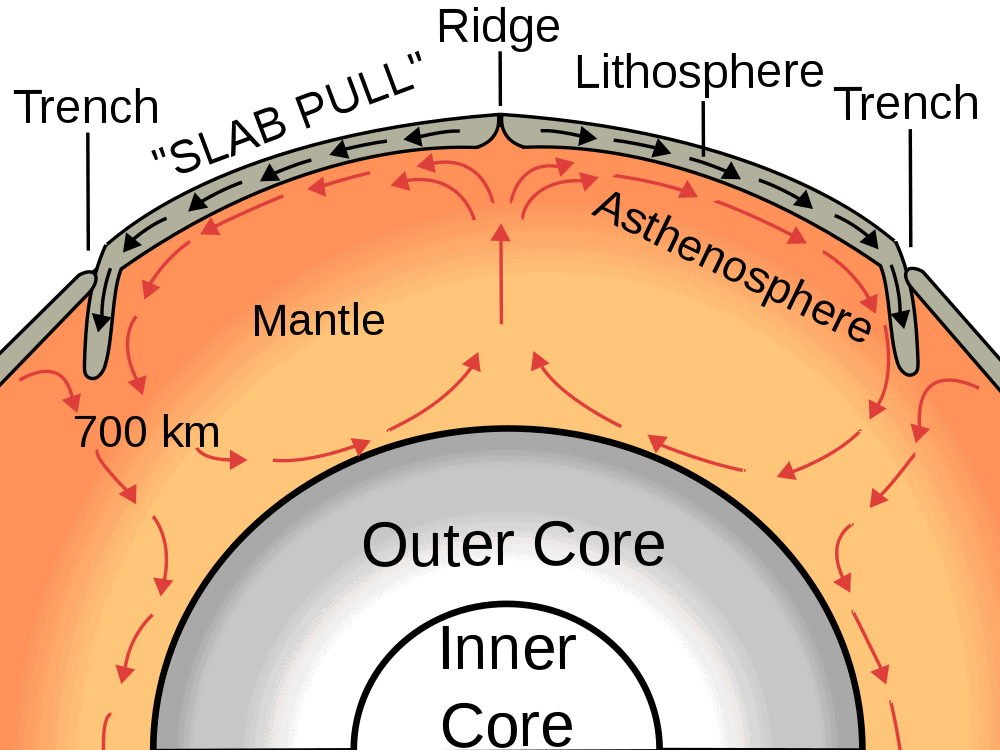We knew the Earth’s insides are hot, but just how hot are they? A new study found that the Earth’s mantle could go up to a whopping 1410 degrees Celsius (2570 degrees Fahrenheit), significantly more than was previously estimated.

For once, something’s hotter and it’s not connected to global warming. The Earth’s mantle, the thickest layer of the Earth makes up 84% of the planet’s volume, lying between the Earth’s crust and its core. Because of its inaccessibility, pretty much everything we know about it comes from indirect evidence. Indeed, it’s a testament to how much geology has progressed that we’re able to describe it in such detail, but as it so often happens with indirect evidence, it can be quite difficult to get the figures exactly right. Now, this new study found that beneath our planet’s oceans, the mantle might be significantly hotter than we thought: by almost 110 degrees F (60 degrees C). This change could help us better understand tectonic processes and help us develop better models of our planet.
Having such a hot mantle could mean that the mantle is less viscous (flows more easily), which could explain how tectonic plates are able to move on top of the asthenosphere,” the upper layer of Earth’s mantle, said study lead researcher Emily Sarafian, a doctoral student in the Geology and Geophysics Department at a joint program run by the Massachusetts Institute of Technology and the Woods Hole Oceanographic Institution.
Technically, the mantle is solid, but for geological purposes, it usually behaves like a fluid. Sounds strange? Well, imagine a jar of honey, which is viscous. The hotter it gets, the more liquid it becomes — and the opposite stands too, cold honey is quite solid.
“If you put honey in the fridge for an hour, it will barely flow when you take it out,” Sarafian said in an email to Live Science. “If, instead, you put honey on the stovetop, it will flow very easily, because it’s hotter.”
So the mantle is so hot that in some regards, it acts like a fluid. This is important because according to our understanding, there are convection currents in the mantle that move the tectonic plates around (and contribute to numerous geological processes). In other words, some parts of the mantle get hotter and become less dense, rising towards the surface. As they move, they transfer some of the heat towards the surface, where plumes of less dense magma break apart the plates at the spreading centers, creating divergent plate boundaries. At the other end of the process, some other end of tectonic plates cools down and sinks — thus, new crust is sometimes formed, and sometimes recycled in the mantle, maintaining an equilibrium.

To continue the analogy, imagine that the tectonic plates are like pieces of biscuit laid on top of the honey. If the honey (I mean, mantle) is hotter than we thought, then it means that it acts more like a liquid, and “flows more,” so to speak. It means that the currents might be stronger than we thought and the biscuits (plates) might “float” with less resistance — it also means that our current models might need some tweaking.
Hotter than hell
We knew very well that the mantle is hot, there’s plenty of clues to indicate that. For instance, it generates the hot lava that flows out from underwater volcanoes. We also know of the gravitational heat, left over from when gravity first condensed our planet from the hot gases and particles, and perhaps most significantly, of the heat from radioactive decay. But because we can’t really probe it directly, we’ve relied on models and lab experiments to estimate its temperature. The one piece of direct evidence we have is from mantle xenoliths — rocks that were brought up from the mantle by convection currents and exposed by mid-oceanic ridge spreading, but because those rocks undergo processes that significantly change their structure and chemistry, researchers prefer to create synthetic rocks to model conditions.
After the synthetic rock is created in the lab, researchers subject it to pressures and temperatures ranging around those of the mantle and see at what temperature it melts. This is called the solidus temperature. The problem with estimating this temperature is water. Due to a chemical quirk, water greatly affects the solidus temperature of these rocks. Therefore, estimating the water content of the rocks is essential for determining the solidus temperature.
Other teams were aware of this issue, “but they were never able to quantify how much water was in their experiments because the mineral grains that grow during an experimental run at mantle pressures and temperatures are way too small to measure with current analytical techniques,” Sarafian said. She added that researchers were using some corrections, adding a bit of extra water to the synthetic rock — but this correction was unnecessary, as the rocks already accumulate the water from the atmosphere.
She found the missing puzzle piece in olivine, a magnesium iron silicate with larger grains, which can be better measured. So she added olivine to the mix, which allowed her to measure water content more accurately.

Rob Lavinsky
“We performed melting experiments the same way that previous scientists did, putting a synthetic rock to high pressure and temperatures, but by adding these grains to our experiments, we were giving ourselves a target that was large enough to analyze for water content,” she said.
With the new water correction, a different solidus temperature emerged, and a different temperature of the mantle.
Paul Asimow, a professor of geology and geochemistry at the California Institute of Technology who was not involved with the study, complemented the research in an accompanying commentary in the journal Science, saying that it is “an appreciable correction.”
Journal Reference: Emily Sarafian, Glenn A. Gaetani, Erik H. Hauri, Adam R. Sarafian — Experimental constraints on the damp peridotite solidus and oceanic mantle potential temperature. Science 03 Mar 2017: Vol. 355, Issue 6328, pp. 942-945.
DOI: 10.1126/science.aaj2165


